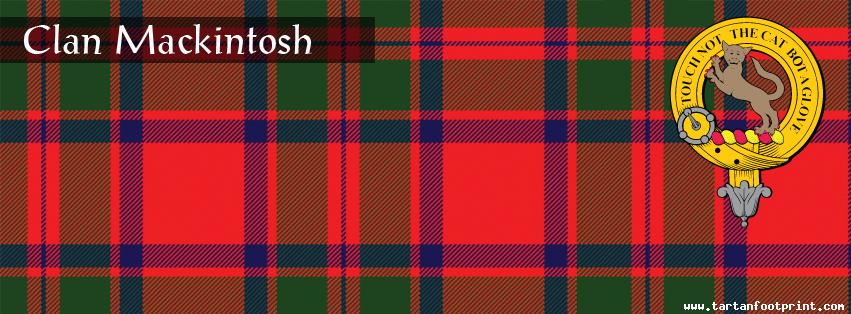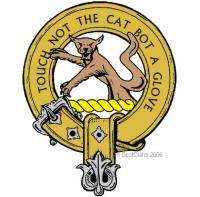
Clan Mackintosh (MacIntosh)
The founder of the MacKintosh clan is reputed to have been Shaw MacDuff, second son of the Earl of Fife, and a member of the royal house of Dalriada. He travelled north with Malcolm IV in the twelfth century to suppress rebellion in Morayshire and was granted lands in the Findhorn valley. These lands became the heartland of the clan and the burial place of the clan chiefs.
Shaw was known at this time as "Mac an Toiseach" or "son of the chief", hence the name MacKintosh. The MacKintosh chiefs steered themselves through the hazards of Scottish history with great skill, even leading the great confederation of clans known as Clan Chattan, although this honour was challenged by the MacPherson chiefs on many occasions over the centuries.
The MacKintosh clan had to fight to defend their powerful position and conducted long-running feuds with the Earls of Moray and Huntly, among others.
One famous feud with the Comyns was to have ended in a feast of reconciliation but the Comyns made plans to destroy the MacKintosh clan once and for all. They were betrayed by a family member, however, and were slaughtered by MacKintosh clansmen, led by their chief Malcolm MacKintosh.
The MacKintosh clansmen took part in the Jacobite rising of 1715, following which many were transported to the Americas. The clan remained loyal to the Stewarts in 1745 and the wife of the absent chief, Lady Anne MacKintosh, raised a force of 400 men to join Charles Edward Stewart.
She also received the prince at the chief's seat of Moy Hall. During his visit, a force of 1500 government troops attempted to capture him, but were fooled by Lady Anne into believing they had walked into the midst of the entire Jacobite army. They consequently fled, and this incident became known as the "Rout of Moy", with Lady Anne MacKintosh earning the nickname of "Colonel Anne".
Moy Hall is still the seat of the MacKintosh chiefs, as it has been for over 600 years, and still holds the bed slept in by Charles Edward Stewart.








